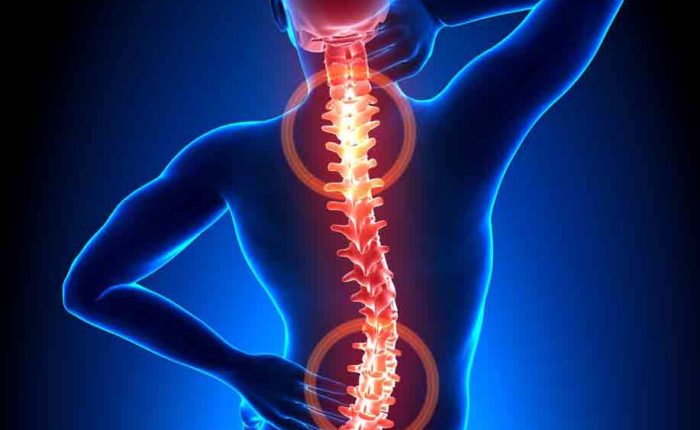Low back pain is a common condition, and it can be caused by lumbar sprain, spinal stenosis, disc herniation, and different degenerative spinal disorders. The term “discogenic back pain” means one or more intervertebral discs are the pain source.
Symptoms of disc issues may include diffuse low back pain, numbness, tingling or “pins and needle” sometimes radiating into the hip, thigh or lower leg. Radiating leg symptoms may suggest the disc is bulging and placing pressure on a nerve root. Pain may worsen when activities such as sitting, bending forward, improper lifting, coughing or sneezing increase the pressure within the disc.
Over 80% of the US population will experience lower back pain at some point in life, and over 50% experience low back pain each year. Because the five lumbar vertebrae (L1-L5) are responsible for bearing much of the weight of the upper body — and the stress of its repeated movements — the discs in the lower back are under constant stress. This stress can cause a disc to bulge and rupture, possibly leading to pain in the disc itself, and also in surrounding areas if the damaged disc causes nerve compression in the spinal canal.
The causes of these issues may include injury trauma, chronic poor sitting posture, improper lifting and bending, or poor mechanics of other areas of the spine or hips. These factors lead to micro-tearing of the ligament-like material of the disc, allowing the disc to bulge. Although an acute episode of pain may occur for no apparent reason, the underlying cause is usually repetitive damage to the disc stemming from weakness, muscle imbalance, or stiffness.
Manual therapy and exercise have proven very effective in relieving discogenic low back pain. These techniques include joint and soft tissue mobilization, passive stretching, and myofascial release, often with an extension-focused exercise program. Education on techniques to avoid stressing the injured disc while it’s healing, along with taping, ice and electrical stimulation can also help relieve pain and promote recovery. A specific exercise program to re-educate the core abdominal and back muscles has been shown to significantly reduce the likelihood of recurrence.
Most people with back pain focus more on the symptoms, rather than the cause of their pain. What they might not know is that movement often provides the best long-term relief for pain. As movement experts, SOL physical therapists can help restore mobility, reduce pain, and improve quality of life!


